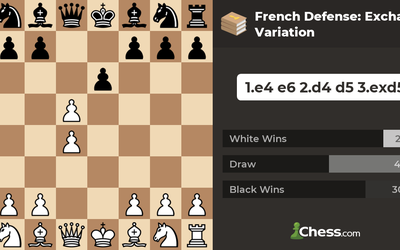
Best Chess Openings
Top 5 best chess openings1. Kings Indian Attack
The King's Indian Attack (or KIA), also known as the Barcza System (after Gedeon Barcza) is a chess opening system for White, characterized by several moves. The center pawns are developed to e4 and d3, the knights are developed to d2 and f3, the king's bishop fianchettoes at g2 following the g-pawn's movement to g3, and White castles kingside. The resulting arrangement has multiple positional themes: the pawn at d3 and the knight at d2 both defend the pawn at e4, the knight at f3 attacks the center, the fianchettoed bishop may influence the center following subsequent moves, and castling removes the king to safety while bringing a rook into the game.
Unlike other chess openings, The King's Indian Attack is not a specific sequence of moves, but rather a system for White where the moves may be permuted at the player's discretion. When a game opens with most or all of the above moves, to the exclusion of moves which typify other openings, the game may be described as a King's Indian Attack
2. London System
The London System, is an opening system in chess that can be used against virtually any black defense and thus comprises a smaller body of opening theory than many other openings. Also known as the "Mason Variation," it is a line in the Queen's Pawn Game where White opens with 1. d4, but does not play the Queen's Gambit, instead opting to rapidly develop the dark squared bishop, white's most underutilized piece. This will often result in a closed game. Because of its solid reputation, the London System has faced criticism for its lack of dynamic play.
The London System is comparable to the Colle System, in which the queen's bishop remains on c1.
3. Kings Indian Defense
This article is about the opening defined primarily by the placement of the Black pieces. For the opening system that creates a similar arrangement of the White pieces, see King's Indian Attack.
The King's Indian Defence is a common chess opening. It arises after the moves:
- d4 Nf6
- c4 g6
Black intends to follow up with 3...Bg7 and 4...d6 (the Grünfeld Defence arises when Black plays 3...d5 instead, and is considered a separate opening). White's major third move options are 3.Nc3, 3.Nf3 or 3.g3, with both the King's Indian and Grünfeld playable against these moves. The Encyclopaedia of Chess Openings classifies the King's Indian Defence under the codes E60 through E99.
The King's Indian is a hypermodern opening, where Black deliberately allows White control of the centre with its pawns, with the view to subsequently challenge it. In the most critical lines of the King's Indian, White erects an imposing pawn centre with Nc3 followed by e4. Black stakes out its own claim to the centre with the Benoni-style ...c5, or ...e5. If White resolves the central pawn tension with d5, then Black follows with either ...b5 and queenside play, or ...f5 and an eventual kingside attack. Meanwhile, White attempts to expand on the opposite wing. The resulting unbalanced positions offer scope for both sides to play for a win.
4. Queens Gambit
The Queen's Gambit is one of the oldest known openings in chess. It was mentioned in the Göttingen manuscript of 1490 and was later analyzed by Gioachino Greco in the 17th century.[3] In the 18th century, it was recommended by Philipp Stamma and is sometimes known as the Aleppo Gambit in his honor.[4] During the early period of modern chess, queen pawn openings were not in fashion, and the Queen's Gambit did not become commonplace until the 1873 tournament in Vienna.[5]
As Wilhelm Steinitz and Siegbert Tarrasch developed chess theory and increased the appreciation of positional play, the Queen's Gambit grew more popular,[5] reaching its zenith in the 1920s and 1930s, and it was played in all but 2 of 34 games in the 1927 World Championship match between José Raúl Capablanca and Alexander Alekhine.
After the resumption of international chess activity following World War II, it was less frequently seen as many players moved away from symmetrical openings, tending to use an Indian Defence to combat queen pawn openings; however, it is still frequently played.
5. Scholar's mate
The Scholar's Mate was named and described in The Royall Game of Chesse-Play, a 1656 text by Francis Beale which adapted the work of the early chess writer Gioachino Greco.[1] The example given above is an adaptation of that reported by Beale.
The Schollers Mate.
White kings pawne one house.
Black kings pawne the same.
White Queen to the contrary kings Rookes fourth house
Black Queens knight to her Bishops third house
White kings Bishop to the queens Bishops fourth house
Black kings knight to the kings Bishops third houseWhite queen takes the contrary kings Bishops pawne gives mate.




